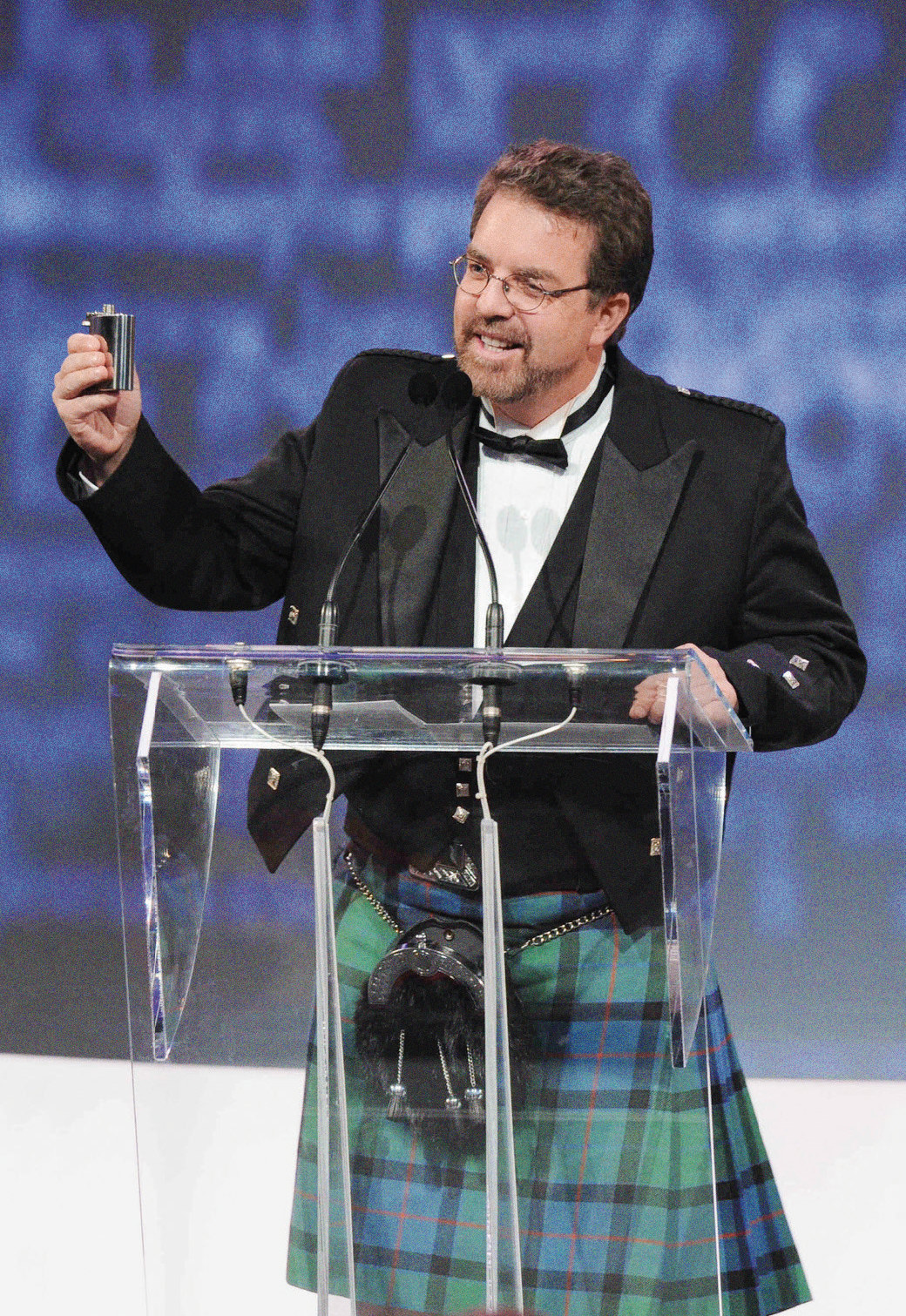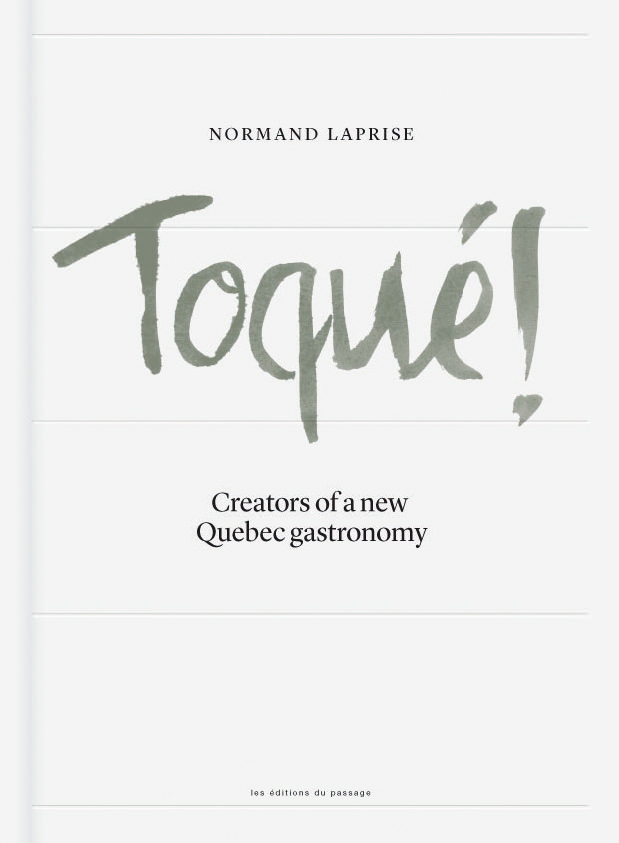-
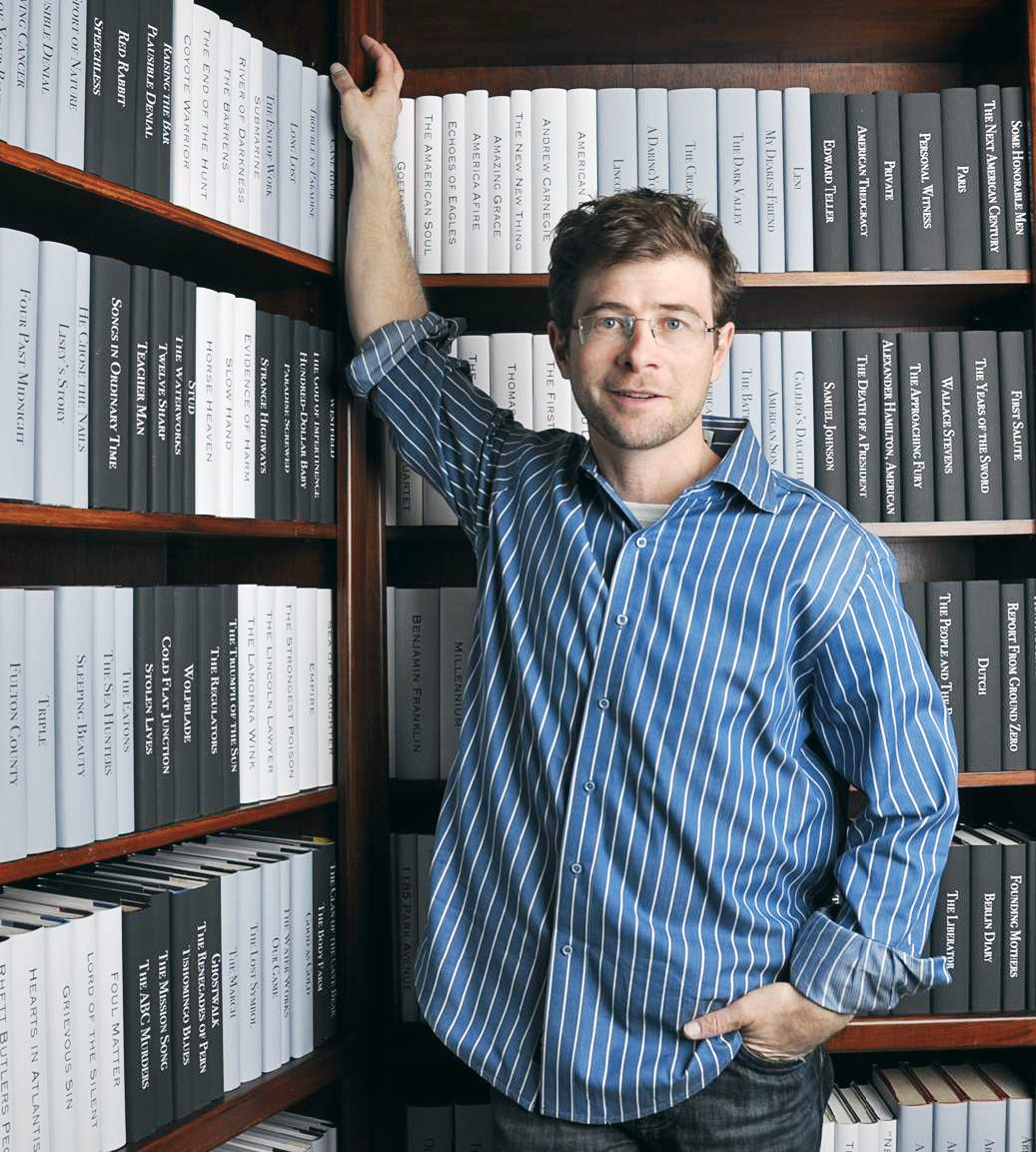
Juniper Books, the company Thatcher Wine founded, offers impeccably designed options for book display that range from classic to quirky.
-
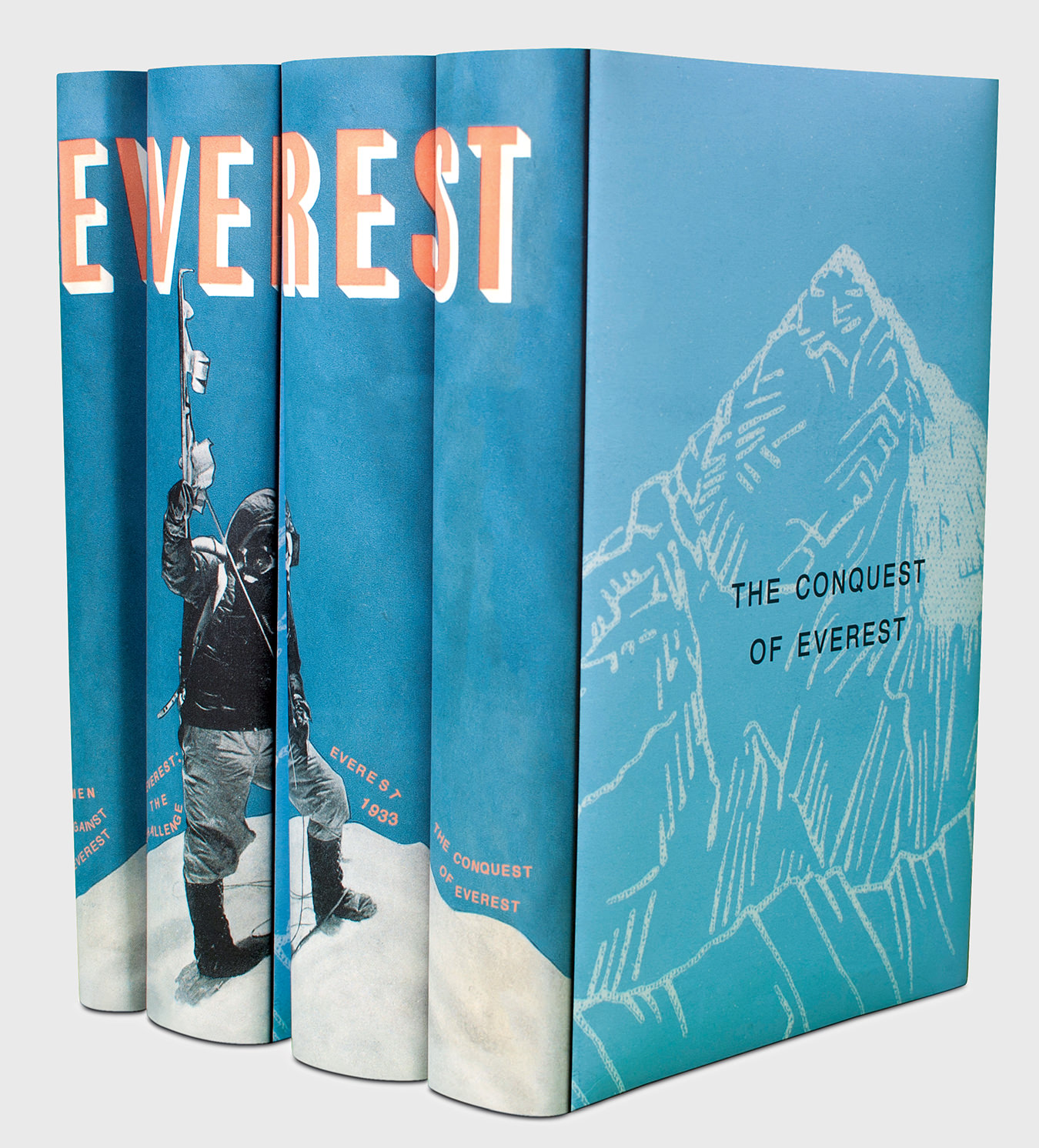
The Conquest of Everest was a book set made for the American Mountaineering Center in Golden, Colorado.
-
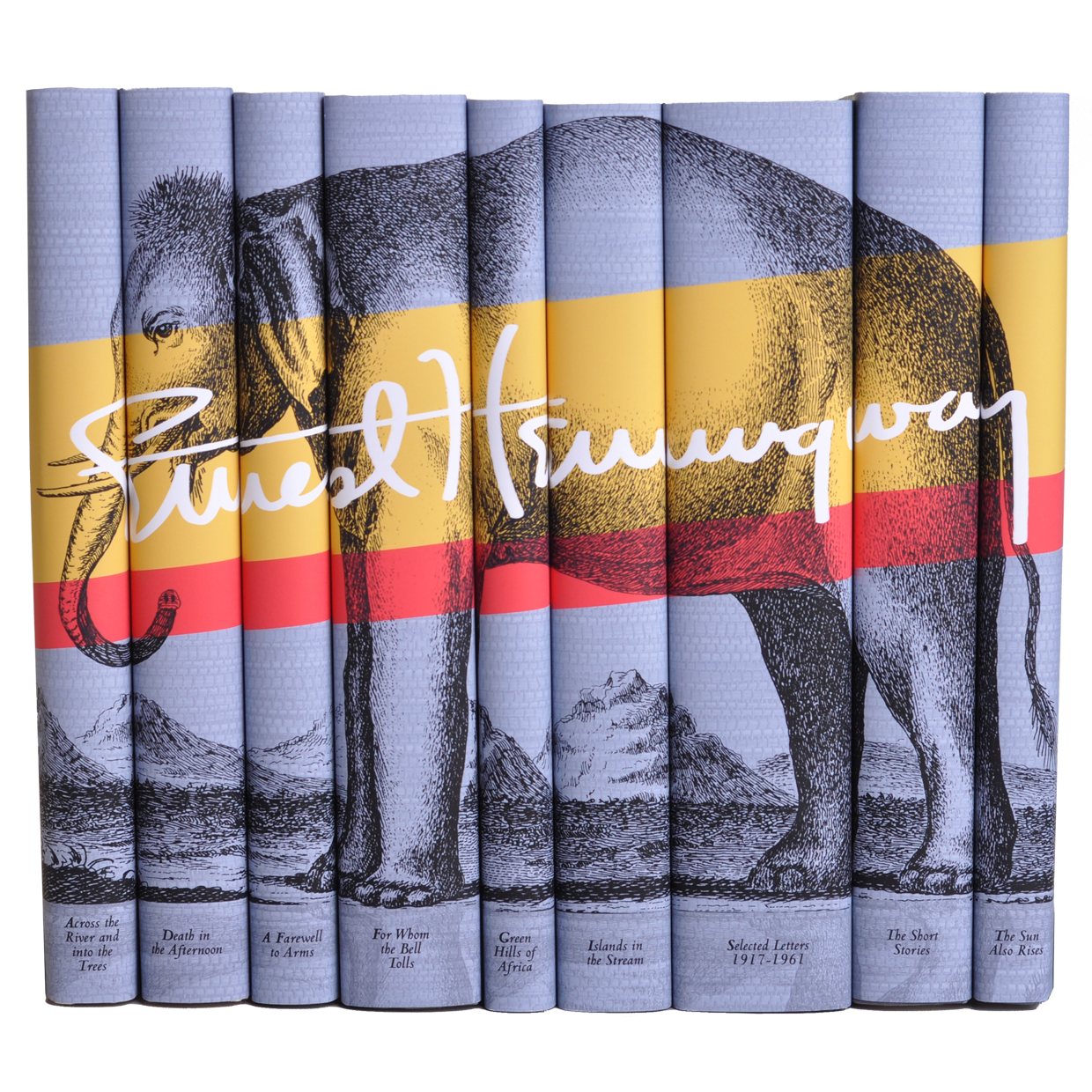
Juniper Books’ Ernest Hemingway book set.
-
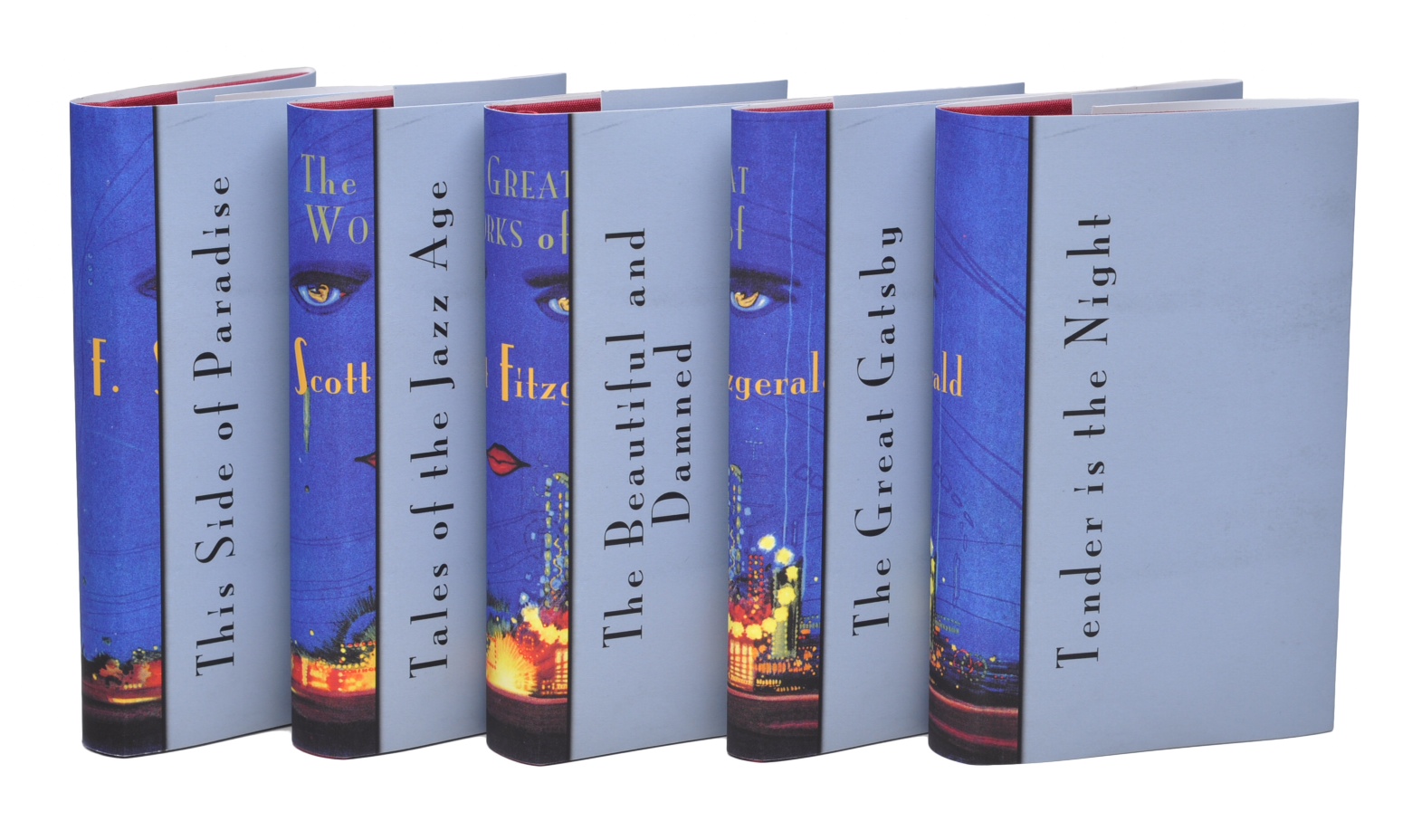
Juniper Books’ F. Scott Fitzgerald book set.
-
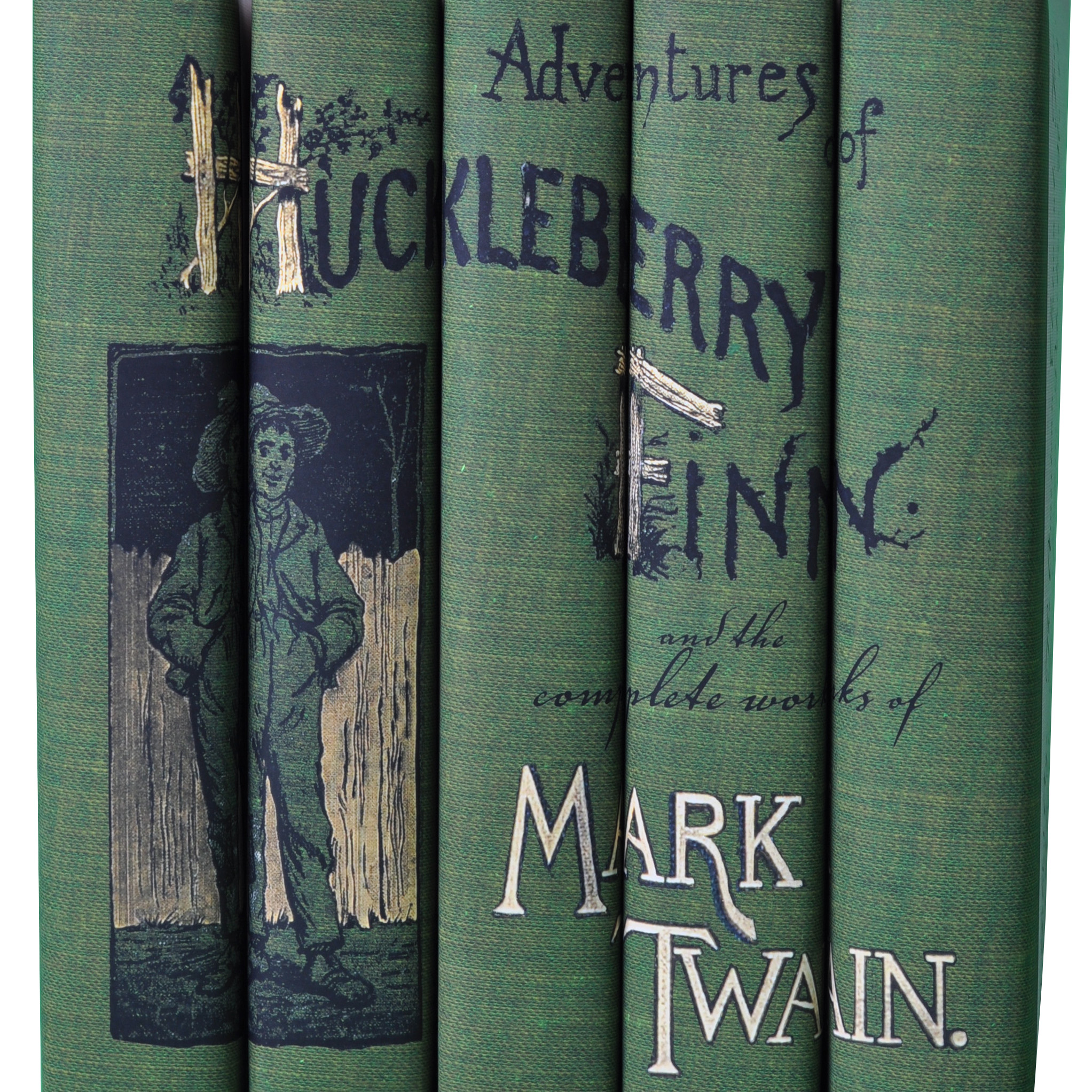
Juniper Books’ Mark Twain book set.
-

Juniper Books’ J. D. Salinger book set.
-

Juniper Books’ Leonardo da Vinci book set.
-

Juniper Books’ Sherlock Holmes book set.
-

Juniper Books’ Piano Keyboard eight-book set.
-
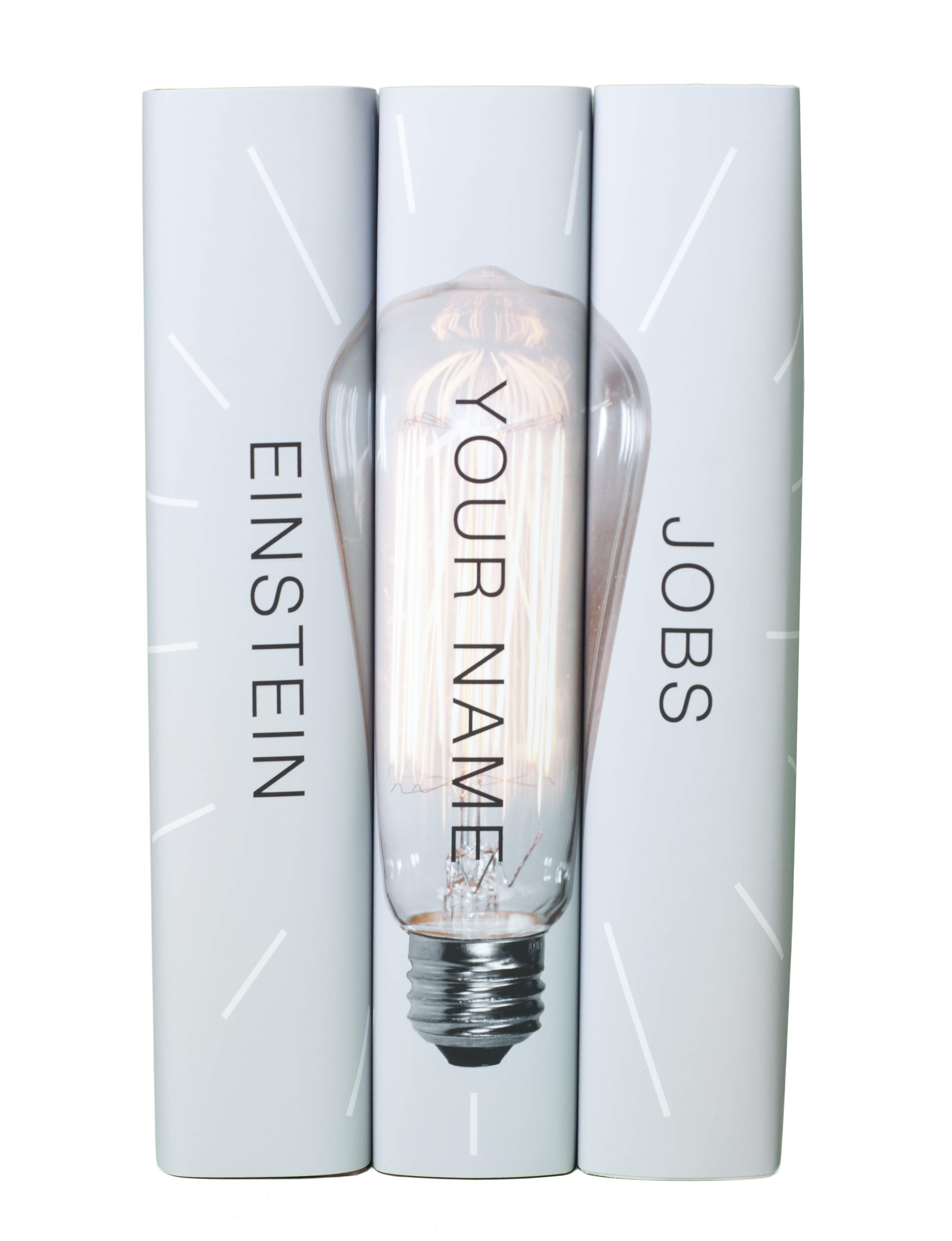
Juniper Books’ personalized Genius book set.
Juniper Books
Custom covers.
In talking about Thatcher Wine, it’s almost impossible to avoid making some groanworthy remark about judging books by their covers. So to get it out of the way now: yes, he wants you to judge his books by their covers.
That’s because Thatcher Wine’s company, Juniper Books, makes covers—extraordinary, eye-catching covers, often assembled into whole room–sized compositions, with the spines of the books uniting to form a single image. Working with a small team of collaborators, Wine also advises his clientele as to the content of their book collections, creating libraries that are as compelling to the mind as to the eye.
It sounds like an ideal job. But on a recent Friday afternoon, Wine is absent from the office/warehouse that is the headquarters of his operation, located in a 4,000-square-foot house not far from his own in Boulder, Colorado. The recent storms in the region dumped some 43 centimetres of rain on the city in four days, this in a place that rarely sees that much in a whole year. Consequently, Wine has been stuck at home much of the week bailing out his family’s basement. Boulder, says Wine, is “usually a very sunny, dry place to be,” which is a climate ideal for someone whose work entails old and valuable stacks of paper. Fortunately for Wine, his warehouse belongs to the exceptional category, and none of its precious contents were damaged by the weather. “Moisture is the enemy of books,” he says, “and we got spared in that respect.” Had the storms passed through 12 years ago, when Wine first founded his unique design-slash-bibliophilic enterprise, the story might have been a very different one: back then, Wine was working from his now-soaked home, selling rare and first-edition books through eBay, AbeBooks.com, and other channels. He was doing a small trade mostly through friends and personal contacts, and not soon after, Wine was obliged to move Juniper to bigger quarters as more and more people began to hear about his work, and his projects—in hotels, restaurants, and private libraries all over North America—were drawing much attention.
Despite his prodigious success as a cover maker, this was not Wine’s original métier. “I’d been in consulting for a little while, doing Internet and web development,” says the proud Coloradan. Wine is not a native westerner: he grew up in Midtown Manhattan, attended Dartmouth College in New Hampshire, and lived for years in Boston and Los Angeles before relocating to Boulder. “It’s a great location for skiing,” he says, “but big enough that it’s not like a ski town.” Having set aside his consulting career and settled down in the Rockies, the young entrepreneur was looking for something new, and he started selling parts of his extensive book collection as a stopgap measure.
That led to an interest in rare books, and a request by a family friend to help them curate a library for a new house. “The architect had put in lots of bookshelves,” recalls Wine, “and they wanted it to look as though they picked out the books themselves, that it wasn’t just a staged thing.” Wine put together a collection of unique volumes that was an instant hit with both the clients and their architect. In short order, Wine found himself helping to assemble libraries for designers like Philippe Starck, with an increasing focus on how books could be artfully arranged to suit the needs of each interior. (The career switch sat just fine with his law professor wife: “She’s the biggest reader in the family,” says Wine. “I help her track down rare books about federal Indian Law and the Cherokees.”) In 2001, Juniper Books was established, and its founder’s fundamental approach has been more or less the same ever since. “I listen to my customers,” say Wine. “If they want certain kinds of books, such as leather-bound books, I’ll find them. And if they don’t exist, I’ll create them.”
It’s the creation part that makes Wine’s business so distinct from others in the rare and antique books trade. Collecting and curating is a common enough practice, and Juniper certainly does both. But many dealers will also repair and rebind valuable volumes, which Wine doesn’t. Instead, Wine has developed a process that is “a trade secret”, he says, printing the desired jacket image onto high-quality paper, and then carefully wrapping each individual book by hand in the new cover, leaving the book inside untouched. Working with his staff of four, as well as a circle of freelancers, Wine can print and assemble a library in anywhere from three days to three months, depending upon the number of volumes. “We put a lot of R&D into finding the right paper, one that has a nice crease and holds well,” he explains. Wine also makes libraries for kitchens and children’s rooms; the covers are waterproof and tearproof and can stand up to considerable wear. And clients must send their libraries—lock, stock, and bookmarks—to Boulder. Wine won’t send his bindings to them. “Some people just say, ‘Our books are tall—send me some jackets,’ ” he relates. “And I always say no. It’s a question of quality control.”
The results speak for themselves. For one client, a devotee of Asian thought and religion, Juniper produced several oversized portraits of the Buddha across multiple bookshelves; for another, the St. Regis San Francisco Hotel, the company created a stylized mural of the Golden Gate Bridge, stretching across four contiguous shelves. For some clients, the objective isn’t to create a given image but simply a row of handsome spines attractively arranged.
Some of Juniper’s compositions—beguiling patterns, brightly coloured spines—are available for order through the company website, but it’s the complex custom projects that seem to give Wine the most satisfaction. Of all his projects to date, Wine is happiest about one that Juniper recently executed for a golf course in Texas. “It’s one big image of their course on the wall,” he says about the complex image that required extensive modelling and trial and error. Libraries like this aren’t necessarily for the truly bookish: the books in the golf course clubhouse aren’t really intended to be read, just looked at. (After all, to take them down would ruin the image.) But Wine maintains a busy trade doing conventional library curation, producing collections that “aren’t just for show,” as he puts it.
More importantly, Wine sees Juniper as forging a new and highly promising path for print culture in a rapidly changing media landscape. “I think the decisions people make about what printed books to keep on their shelves are more important and thought out than ever,” he opines. “Many of my customers do their reading on digital devices, but they still want to surround their families and guests with printed books.” In an age where books aren’t just vessels of information but design objects unto themselves, Juniper is ahead of an industry wide trend. “Publishers have to work harder to convince buyers to purchase books too,” Wine adds, “so they’re thinking more about what really deserves to be in print and making the books more compelling than ever.”

